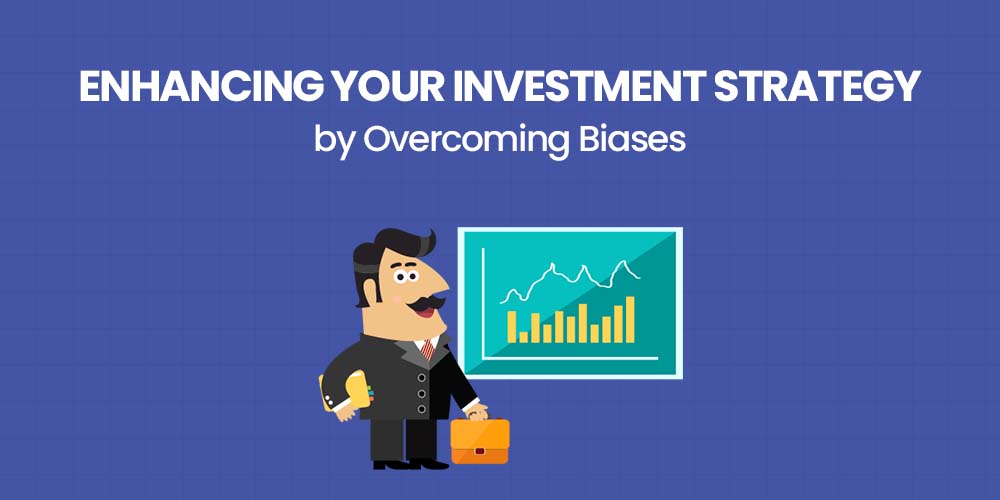Enhancing Your Investment Strategy by Overcoming Biases
Introduction
In their simplest forms, the benchmarks of neoclassical theories generally presuppose rational behavior, implying that people optimally employ all available information to arrive at the best possible decisions for the market economy. Nevertheless, behavioral finance does not embrace this idea given it focuses on the actual actions of different persons and financial markets. Investigations show that in large and comprehensive decision-making processes, individuals often are in a state of irrationality owing to equivocalities and too much data. Instead of making the best decisions, they bias and make choices, by compromising and accepting the satisfactory option known as ‘good enough’.
The object of the present work is to identify these self-produced illusions and to study the impact of their rectification on the assessment of investment projects by investors, which can considerably change the economic results for the better. Thus, they can improve their investment processes by aligning their financial choices based on rational and efficient expectations. Perhaps, the convergence of the behavioral approach to the utilization of mainstream funding would prove to harmonize fully.
Common Biases Affecting Investment Decisions
Anchoring or Confirmation Bias
First impressions are hard to change. Individuals often concentrate on information that supports their current beliefs, overlooking any contradictory evidence. Investors influenced by confirmation bias are more likely to search for information that will follow the direction of the investment decision they have made than going contrary to it.
Regret Aversion Bias
Regret Aversion also known as loss aversion, deals with the psychological tendency of people to avoid the negative feeling of regret, of having decided on something that leads to an unfavorable outcome. Anticipated regret observed in investors makes them avoid high risks in order to reduce the likelihood of negative outcomes. This aversion also explains why investors may not want to take an action as, for instance, selling the stocks that are lowering, because taking such an action would compel them to recognize their mistake.
Disposition Effect Bias
This bias concerns itself with categorizing investments into the winner’s pile and the loser’s pile. It may cause investors to hold onto investments with no growth potential or sell successful investments too soon to compensate for earlier losses. Such behavior is self-destructive, this lifts capital gains taxes and reduces the rate of return before taxes.
Hindsight Bias
Hindsight bias occurs when investors believe after an event has occurred, that the event was predictable and obvious, even though it was not reasonably foreseeable at the time.
Familiarity Bias
More often investors tend to lean toward those investments that they are familiar with as opposed to diversifying although the latter holds immense benefits. Some may get stressed with diversifying between the known familiar stocks and the less known international ones or getting stressed with comfortable familiar local stocks and unfamiliar overseas bonds. such a tendency leads to the possibility of having an inefficient portfolio that is more likely to produce a loss.
Self-attribution Bias
Investors with self-attribution bias often credit their own actions for successful outcomes while blaming external factors for failures. This bias frequently acts as a way to protect one's ego or to enhance self-esteem. Those influenced by self-attribution bias may develop excessive confidence in their abilities.
Trend-chasing Bias
Many investors go for profits and returns based on historical stats, an aspect that makes them fail to realize that past profits are not necessarily indicative of future ones. This trend is well augmented by the product issuers where they escalate on the advertising when the past performance is good for attracting new investors. However, research shows that such performance typically does not continue, and investors usually do not benefit from following this trend.
Worry
Worry is a natural and common human emotion that often brings up memories and imagined future scenarios, affecting an investor’s judgment about their finances. When investors worry about an investment, they tend to perceive it as riskier, which often results in a reduced willingness to take risks. To counteract this bias, investors should align their risk tolerance with a suitable asset allocation strategy.
Conclusion
The knowledge of behavioral biases is important for rational decision-making within the investment process. Being aware of such biases as confirmation bias, regret aversion bias, and self-attribution bias goes a long way in preventing their effect. An investor is likely to make better decisions and direct the investment towards something that will benefit financially if understands these tendencies. Thus, the approach that aims at moderation in regard to the autonomous, emotional reactions resulting from impulsiveness, as well as the constant inclination towards the rational analysis of given data may produce more well-ordered and effective patterns of investment.
It is worth assimilating these ideas into your investment plan so that you are able to see behavioral disability as a rich possibility to increase your wealth.
Overcome investment biases and make smarter financial decisions with Enrich Money's advanced tools and insights, empowering you to enhance your investment strategy effortlessly.
Disclaimer: This blog is dedicated exclusively for educational purposes. Please note that the securities and investments mentioned here are provided for informative purposes only and should not be construed as recommendations. Kindly ensure thorough research prior to making any investment decisions. Participation in the securities market carries inherent risks, and it's important to carefully review all associated documents before committing to investments. Please be aware that the attainment of investment objectives is not guaranteed. It's important to note that the past performance of securities and instruments does not reliably predict future performance.

